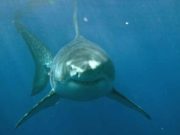Science
Red Tide, Blue Tide: Bioluminescence in the Ocean
Red tides, which often contain harmful algal blooms , are caused by chemical reactions that occur between algae and other substances.
Red by day, blue...
How Whales Become Entangled
This illustration shows how fishing lines attached to traps and buoys on the ocean floor present a potentially deadly hazard to North Atlantic...
#GreenXmas @intheOverberg
We are grateful to the champions @intheoverberg @WWFSouthAfrica @GoSocialSA @GoToSouthAfrica @ShotLeft who created a twitter #chat platform on 25 November where we could share...
What is the smell of rain?
You can tell when rain is coming just by the smell
The word for it is “petrichor.” It’s the name of an oil that’s...
Waaygat whaling station at Stony Point
Early History of the farm Waaygat
The land on which the whaling station was established originally formed part of the farm Waaygat. Historically and...
Marine Tourism
Mussel matchmaking and the glue that holds them
New research shows how mussels find the perfect match. For mussels, fertilization occurs between eggs and sperm that have been released into the...
Menopausal Moms: A Mammal Mystery
Ocean-going mothers everywhere deserves a special salute.They give birth well into their twilight years while human females call it quits 40 years earlier.In...
Beachcomber for a day
One of the chief delights of living on the whale coast is that there is always an excuse to go rambling along the...
How do remoras stick to their host?
Remoras, also known as sharksuckers or suckerfish, are famous for their ability to hitch rides on larger fish and marine mammals by means...
Teeth or bristles
Cetaceans divide into two groups in the manner they catch their food using teeth or bristles
Most cetaceans have triangular teeth and feed on...















